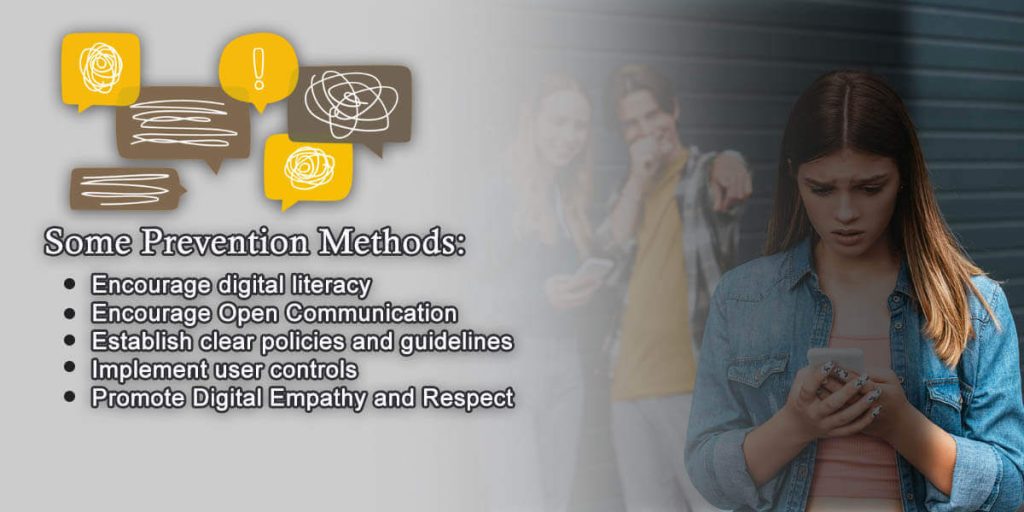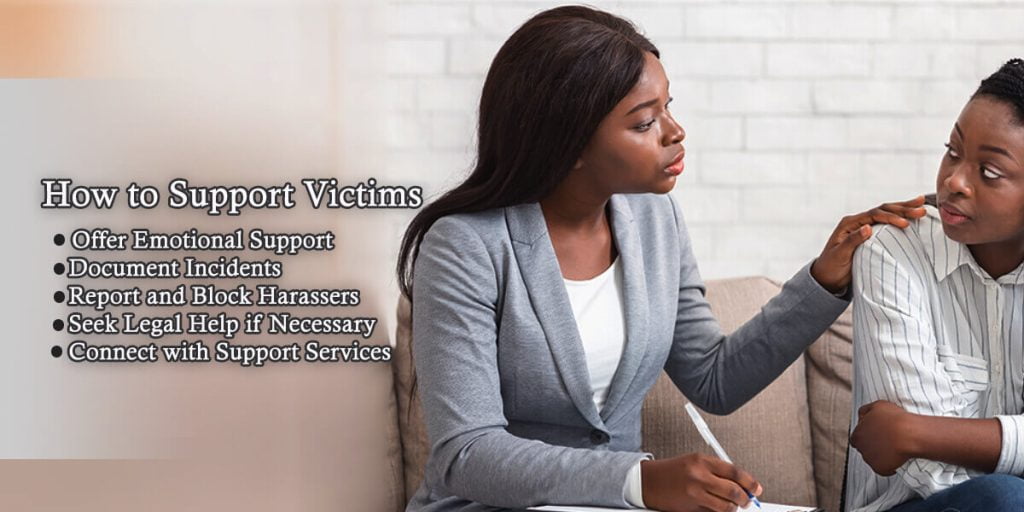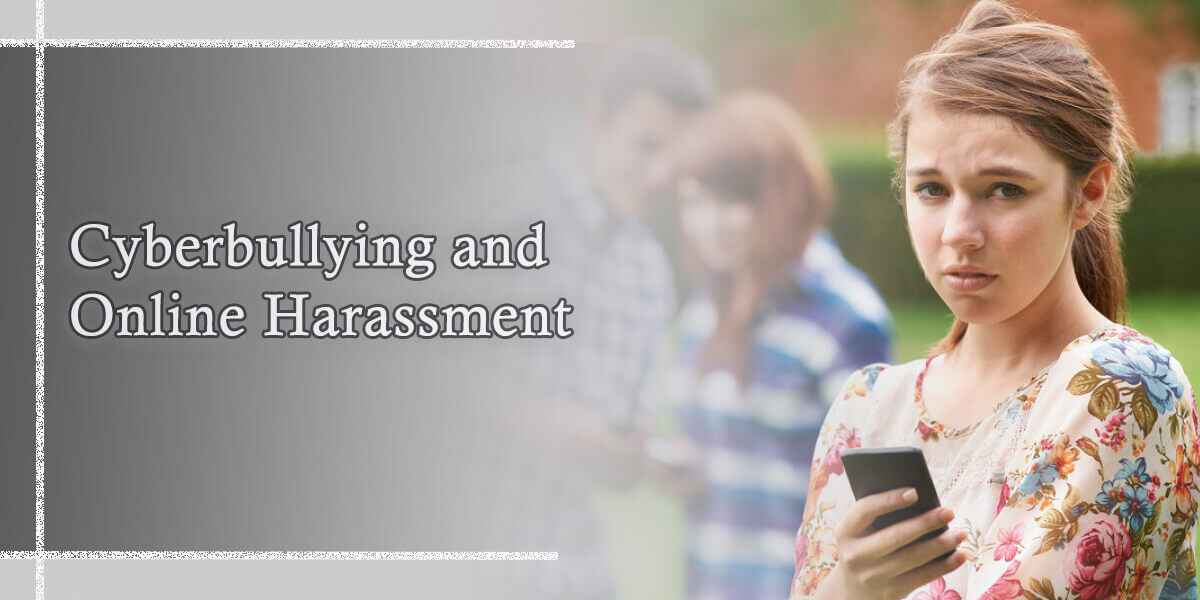Cyberbullying and Online Harassment: Strategies for Prevention and Support
Introduction
The Internet is everywhere in our lives now. It’s mostly good, but there are also new problems like cyberbullying and online harassment. For the victims, these problems may have very negative emotional, psychological, and even physical effects. Understanding the nature of online harassment is important in order to put into practice productive prevention and support measures. We will examine different angles of online harassment in this article and some suitable solutions to address the problem.
Understanding the Concept of Online Harassment
Online harassment is defined as aggressive behavior that is directed at a person or group on digital platforms with the intent to harm them repeatedly. It includes a wide range of behaviors, such as trolling, stalking, hate speech, and online shaming, as well as cyberbullying. Online harassment is a common problem on social media platforms, in online forums, gaming communities, social media applications and messaging applications because being fake on the internet frequently grants culprits.
The Effects of Online Harassment
Online harassers’ actions can have serious negative effects on their victims’ mental and physical health. Anxiety, low self-esteem, suicidal thoughts, and depressive symptoms are all possible outcomes. Due to this fear and a lot of stress, it negatively affects a person’s daily life routine, such as relationships, poor academic performance, poor office performance, and shivering while thinking a lot of things. It is crucial to recognize the early warning signs of online harassment or cyberbullying and then take action to stop it and handle this problem effectively.
Some Prevention Methods

1. Encourage digital literacy: To avoid problems online, learn how to use the internet nicely, keep things private, and build a good online image. Schools, parents, and communities should team up to teach these things.
2. Encourage Open Communication: Encourage an atmosphere where people feel comfortable talking about their online experiences and concerns by encouraging open communication. Encourage victims to speak up and ask for assistance from professional people like lawyers, close friends or hotline services. Promoting open dialogue helps victims build a support network, and it will protect them from online harassment.
3. Establish clear policies and guidelines: Websites, social media, and gaming places should make strict rules to stop online bullying and online harassment. These rules should be clearly posted and consistently followed. Platforms should act immediately to punish offenders, and users should have access to simple reporting mechanisms.
4. Implement user controls: To enable people to control their online interactions, online platforms should offer robust privacy settings and user controls. In order to protect themselves from harassers and reduce their exposure to harmful content, victims can use features like blocking, muting, and restricting accounts.
5. Promote Digital Empathy and Respect: Encourage empathy, respect, and kindness in your online communications. Support initiatives and campaigns that promote goodness and calm hatred. By letting people know about the bad things that happen because of online bullying, you can make the internet friendlier and more helpful. This will help people trust each other and discuss their problems with online bullying.
How to Support Victims

1. Offer Emotional Support: Online teasing victims frequently experience a sense of vulnerability and isolation. Give those who are affected sympathy and emotional support. Affirm their feelings and let them know they are not alone. Encourage them to express their emotions and give them a secure environment in which they will be able to share their side of the story.
2. Document Incidents: Records of incidents, including screenshots, messages, and timestamps, should be kept by victims of online harassment. When reporting the harassment to the appropriate authorities or the administrators of the online platform, this proof may be essential.
3. Report and Block Harassers: Encourage victims to report harassment to the platform or website administrators in order to block the harassers. Most online platforms allow users to report abusive behavior. Furthermore, to stop further contact, victims should block or mute the harasser.
4. Seek Legal Help if Necessary: Victims may need to do so in extreme circumstances. Although legal options are frequently available to address online harassment, cyberbullying laws and regulations vary across jurisdictions. If the victim has a problem, they can ask a lawyer or someone who knows about laws to help them know what to do.
5. Connect with Support Services: Many groups and helplines focus on offering support to online harassment victims. Victims should contact these resources for counseling, guidance, and practical help. These services can support victims in navigating the emotional and practical difficulties caused by online harassment.
Real-Life Example
Sara, a young girl from the UK, started experiencing online harassment when someone sent her hurtful messages and uncomfortable comments on her social media posts.
At first, Sara felt upset and unsure of how to handle the situation. But she quickly realized that she shouldn’t tolerate this behavior. So, she took action by blocking the harasser and reporting their accounts on the respective social media platforms.
Sara also reached out to her friends and family for support. They encouraged her to stay strong and not let the negativity get to her. She found comfort in their kind words and advice.
Furthermore, Sara decided to document the instances of harassment by taking screenshots of the offensive messages. This evidence would be helpful if she needed to involve the authorities or take legal action.
Sara reviewed her privacy settings to ensure her online safety and made her profiles more secure. She also educated herself about online safety and learned to recognize and avoid potential threats.
Through these actions, Sara could take control of the situation and protect herself from further harm. It wasn’t easy, but the support of her loved ones made her emerge stronger.
Promoting Digital Well-being

Tell people about taking care of themselves online, and say how it’s important to have a good balance between the internet and other things. Say they should do stuff that makes them feel good, like relaxing and enjoying hobbies outside of the internet.
Conclusion
Nowadays, in the digital world, online bullying can seriously hurt people’s bodies and minds. To make the internet better, we need to understand online bullying, stop it before it happens, and help those who are hurt. Everyone should team up to keep the internet a safe place where people can share without getting hurt.





